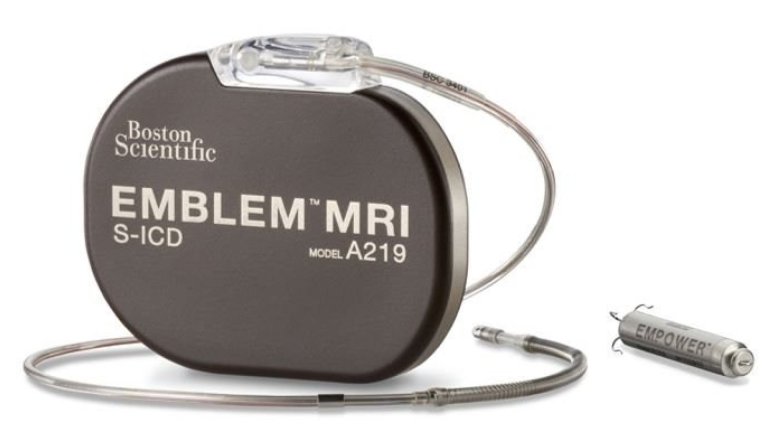"It is the first system where medical devices, which are implanted in the body separately from each other, are in contact with each other to work together. This will reduce the number of complications and invasive procedures," says Knops.
ICD for cardiac arrhythmias
Patients with life-threatening cardiac arrhythmias often have an ICD implanted. If cardiac arrhythmia occurs, the subcutaneous defibrillator can terminate it in two ways.
Firstly, the ICD can deliver one or more electrical shocks. These shocks are often painful when the patient is still conscious. Alternatively, the ICD can deliver pulse therapy: the device rapidly sends small electrical pulses in a row via a wire to the heart. The advantage of this technique is that patients do not experience any pain, as the pulses are much smaller than a shock. With the pulse therapy, the majority of shocks is no longer needed in certain arrhythmias. Whether the ICD can deliver pulse therapy currently depends on the type of ICD.An internal defibrillator (left) and a wireless pacemaker are both implanted in a patient at the same time.

An internal defibrillator (left) and a wireless pacemaker are both implanted in a patient at the same time.
Consideration for the type of ICD
There are two types of subcutaneous defibrillators. The traditional transvenous ICD (TV-ICD) and the subcutaneous ICD (S-ICD). The first has wires (electrodes) that run from the ICD to the heart. As these leads are in the heart, this ICD can deliver pulse therapy.
A major disadvantage of the TV-ICD is that the leads in the heart frequently cause complications, making it necessary to replace them. The other ICD, the S-ICD, is placed under the skin and not in the heart, leading to fewer complications. The disadvantage is that it only delivers painful electrical shocks to treat cardiac dysrhythmia. Knops: "For the best treatment of the patient, a balance is always made between the risk of complications of the TV-ICD and the advantages of the possibility to deliver pulse therapy. In practice we see that despite the risk of complications, the TV-ICD is often chosen.
Better-tuned treatment
With this new technology it is now possible to provide therapy with pulses using the S-ICD without leads in the heart. For this purpose, a wireless pacemaker has been developed which can communicate with the S-ICD. If the ICD detects cardiac arrhythmia, it sends a signal to the pacemaker to trigger the pulses. If the arrhythmia persists, the ICD will still deliver a shock. The patient will receive less frequent electric shocks due to this fine-tuning.
With the introduction of the communicating devices, there are also more tailor-made possibilities. For example, as a first treatment step a pacemaker can be implanted, which on its own is used to prevent the heart from beating too slowly (bradycardia). If the patient later turns out to need an ICD as well, it is still possible to implant the S-ICD. Thanks to the new technique, fewer unnecessary operations will take place.
First two implants in the US
In the US this operation was successfully performed on two patients at the Cleveland Clinic in early December. The implantation took place within the global Modular ATP study, for which Knops is also the principal investigator. In this study, patients with this new technique are followed and results will be analyzed.
Original text (in Dutch): Yvette Hoogerwerf
Photos: Boston Scientific
